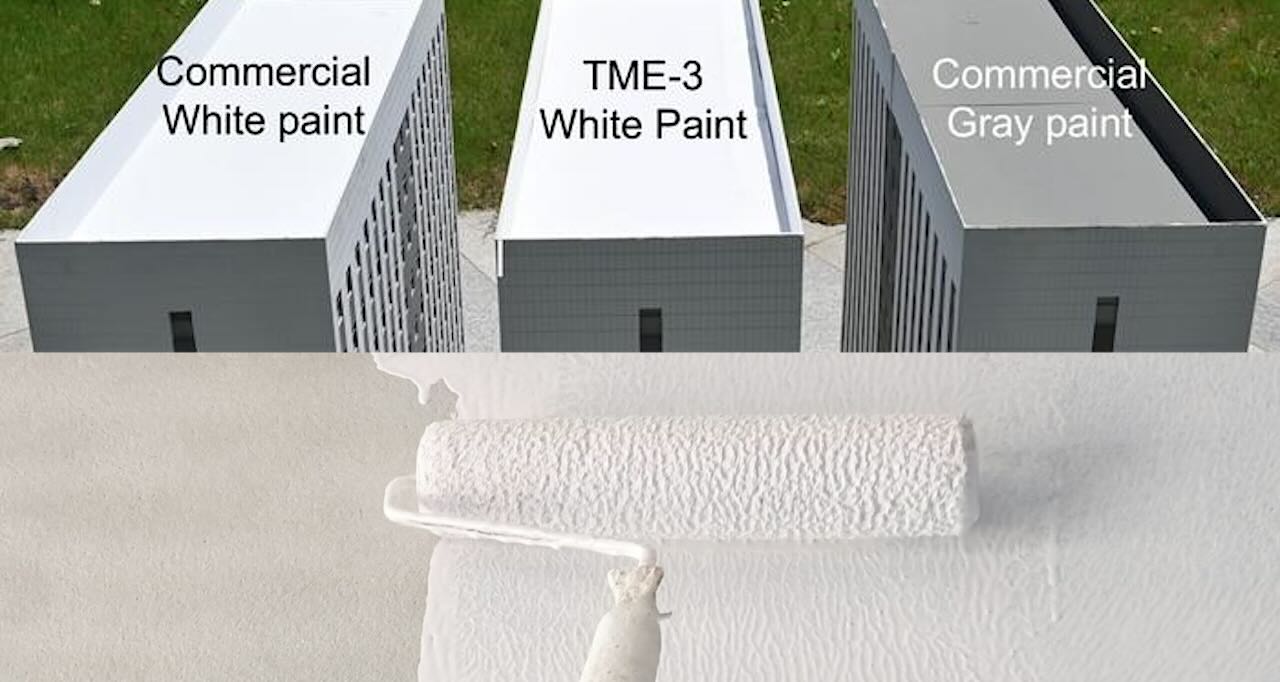
In a development that could reduce the emissions that exacerbate humanity’s climate crisis, an international team of engineers may have created the whitest coating yet—with the help of artificial intelligence.
Their new thermal coating could reduce energy bills significantly by keeping buildings cooler, according to research from the University of Texas-Austin, National University of Singapore, Shanghai Jiao Tong University, and Umea University in Sweden.
Their AI approach for creating complex materials that are ‘three-dimensional thermal meta-emitters’ resulted in 1,500 different materials that can selectively emit heat at various levels and in different manners—making them ideal for energy efficiency through more precise cooling and heating.
“Our machine learning framework represents a significant leap forward in the design of thermal meta-emitters,” said Professor Yuebing Zheng, in the Texas school’s mechanical engineering department, and co-leader of the study published in Nature.
“By automating the process, we can create materials with superior performance that were previously unimaginable.”
The team fabricated four materials and verified the effectiveness of one of the materials by applying it to a model house, and comparing its cooling effect to commercial paints.
After a four-hour midday exposure to direct sunlight, the meta-emitter-coated building roof came in between 5 and 20 degrees Celsius cooler, on average, (between 9° and 36° Fahrenheit cooler) than the ones with white and gray paints, respectively.
The researchers estimated that this level of cooling could save the equivalent of 15,800 kilowatts per year in an apartment building in a hot climate like Rio de Janeiro or Bangkok. A typical air conditioning unit uses about 1,500 kilowatts annually.
A RACE TO COOL THE WORLD:
• This Paint is So White it Reflects Heat So Humans Don’t Need as Much Cooling
• Coating Buildings With Perdue University Paint May Cool Them and Reduce the Need for AC
However, the applications go beyond improving energy efficiency in homes and offices. Using the machine learning framework, the researchers developed seven classes of meta-emitters, each with different strengths and applications.
Thermal meta-emitters could be deployed to mitigate the urban heat island effect—which is due to a lack of vegetation and high levels of concrete—by reflecting sunlight and emitting heat in specific wavelengths.
In outer space, these materials could be useful in space to manage a spacecraft’s temperature by reflecting solar radiation and emitting heat efficiently.
ASPHALT ANSWER: Innovative Paint Cools Down the School Playground By 12 Degrees: ‘I don’t feel like I’m in an oven’
Beyond the applications in this research, thermal meta-emitters could become a part of many things we use daily. Integrating them into textiles and fabrics could improve cooling technology in clothing and outdoor equipment. Wrapping cars with them and embedding them into interior materials could reduce the heat that builds up when they sit in the sun.
The painstaking traditional process of designing these materials has held them back from mainstream adoption, due to their three-dimensional complexity, limiting the outcomes to simple geometries such as thin-film stacks—with the performance coming in short on some measures.
“Traditionally, designing these materials has been slow and labor-intensive, relying on trial-and-error methods,” said Zheng in a media release. “This approach often leads to suboptimal designs and limits the ability to create materials with the necessary properties to be effective.”
“Machine learning may not be the solution to everything, but the unique spectral requirements of thermal management make it particularly suitable for designing high-performance thermal emitters,” said Kan Yao, a co-author of this work and a research fellow in Zheng’s group.
INSPIRE THE NEXT GEN OF ENGINEERS By Sharing This on Social Media…
